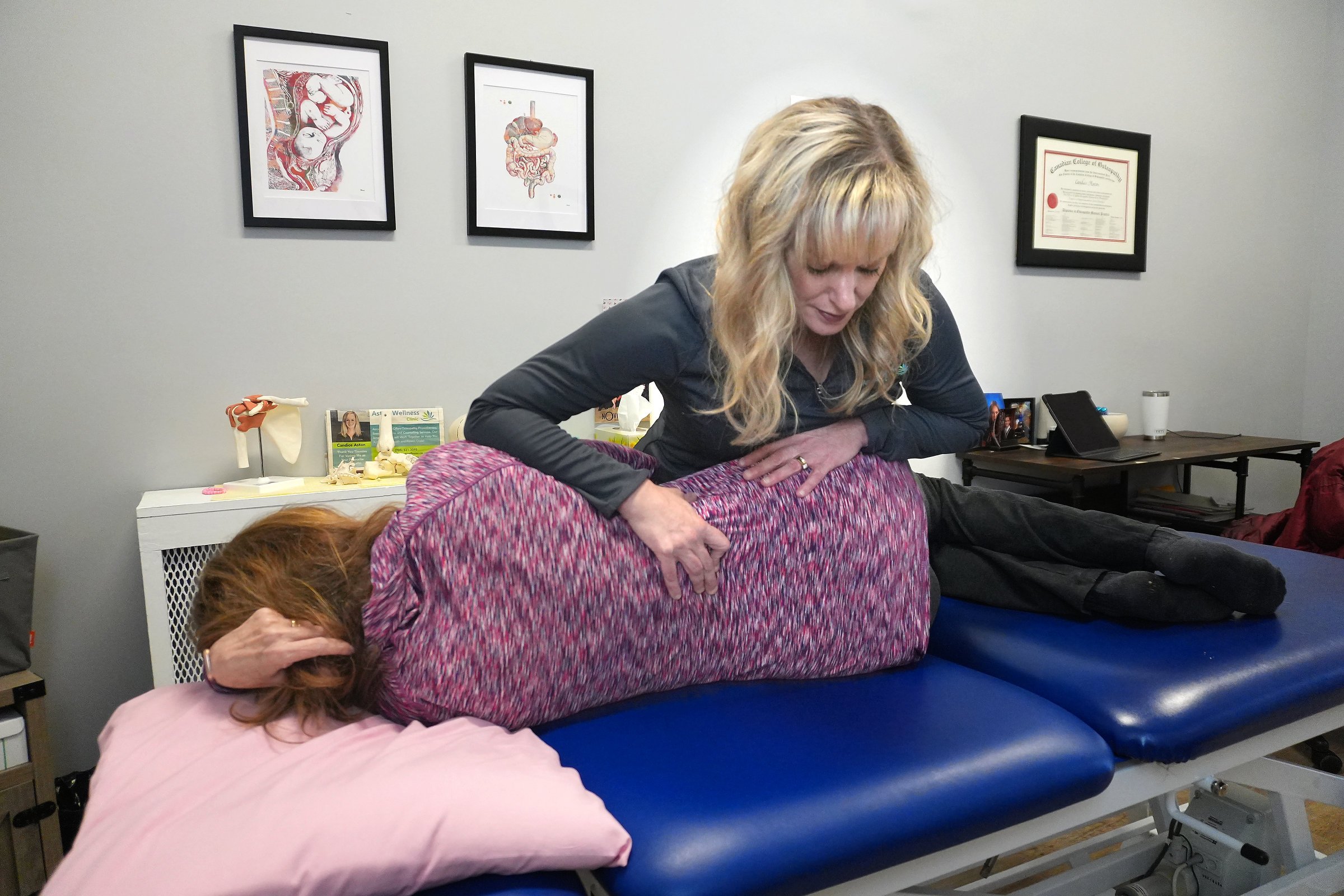
Our Services
Osteopathy
What is osteopathy?
Osteopathy is a hands-on, drug-free therapy that helps your body work better by finding and treating the source of pain or problems. It is based on the idea that the body can heal itself naturally. This healing is helped by good blood flow, which carries important things like hormones, enzymes, immune factors, and oxygen throughout the body.
The benefits of osteopathy
Improves joint mobility: Increases range of motion and reduces stiffness.
Reduces pain and discomfort: Helps alleviate symptoms of conditions like back pain, neck pain, and headaches.
Enhances circulation: Promotes better blood flow, which can speed up healing.
Supports posture improvement: Addresses imbalances that contribute to poor posture.
Boosts immune system function: May help the body’s natural defense mechanisms work more effectively.
Facilitates better sleep: Relieves conditions that can cause sleep disturbances, such as chronic pain.
Decreases stress and tension: Through hands-on manipulation, it can reduce stress levels in the body.
Promotes overall well-being: Encourages the body’s self-healing capabilities, leading to better health and vitality.
Osteopathy plus…
Osteopathy can be combined with other therapies, each offering special benefits that help support the overall health and wellness approach used by osteopathic practitioners. Here are a few:
Physiotherapy: Using osteopathy together with physiotherapy can offer several benefits for improving health and well-being, including enhanced pain management and improved mobility and flexibility.
Yoga and Pilates: These practices support flexibility, strength, and balance, which can help maintain the benefits of osteopathic manipulations and improve body awareness and posture.
Psychotherapy or Counseling: Since emotional well-being can significantly impact physical health, incorporating mental health support can enhance the holistic approach to wellness that osteopathy promotes.
Combining these therapies with osteopathy can provide a more comprehensive treatment plan. Talk to us about creating a plan that works for you to improve your overall health and well-being!
Our Osteopaths
-

CANDICE ASTON, MScP.T., D.O.M.P., HBSc.H.K.
PHYSIOTHERAPIST & OSTEOPATHIC MANUAL PRACTITIONER
-

FRANCE MAISONNEUVE, O.O.A.
OSTEOPATHIC MANUAL PRACTITIONER
Your questions about osteopathy
What conditions can osteopathy treat?
Many different conditions can be treated by an osteopathic manual practitioner. Pain in the low back, neck, spine and joints are common conditions addressed, as well as myofascial or soft tissue issues. Osteopathic manual practitioners can also treat headaches and problems with the jaw. The treatment does not focus on only one area, but uses manual techniques to balance all the body systems to be able to provide overall health and well-being.
How does osteopathy work?
The osteopathic manual practitioner can determine an appropriate treatment plan by taking a detailed history, performing a complete assessment of the body including position, mobility and quality of the tissues. The treatment is manual therapy that focuses on all aspects of the body including joints, muscles, and the nervous, circulatory and lymphatic systems.
Is osteopathy the same as chiropractic care?
While both osteopathy and chiropractic care focus on the musculoskeletal system and use manual manipulation techniques, their philosophies and approaches can differ. Osteopathy generally takes a more holistic approach, considering the entire body in treatment, whereas chiropractic care often focuses more on the spine and its alignment.
Do I need a referral to see an osteopath?
In many places, you do not need a referral from a doctor to see an osteopath. However, some insurance plans might require a referral for coverage purposes
Is osteopathic treatment painful?
Osteopathic treatment is generally not painful. Some techniques may cause discomfort, especially when working on areas that are already sensitive or inflamed, but osteopaths aim to make treatment as gentle as possible.
How many osteopathy sessions will I need?
The number of sessions needed varies depending on the individual and the condition being treated. Some people may feel relief after just a few sessions, while others may require ongoing treatment to manage chronic conditions.
Can osteopathy help with headaches?
Yes, osteopathy can help with certain types of headaches by relieving tension in the muscles of the neck, shoulders, and head, and by improving circulation and nerve function.
Is osteopathy covered by insurance?
Coverage for osteopathy varies by insurance provider and plan. Some insurance plans cover osteopathic treatment, while others do not. It's important to check with your insurance provider for specific coverage details


